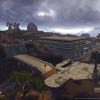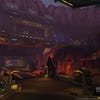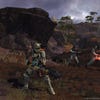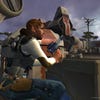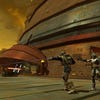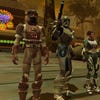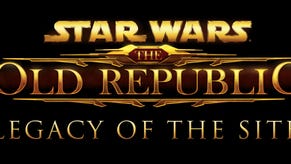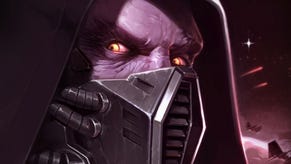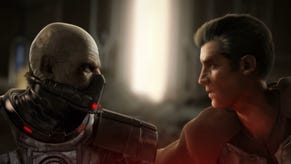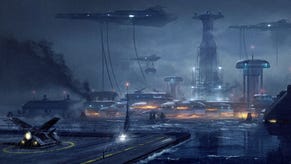Star Wars: The Old Republic
Better off Jedi.
Missions flow smoothly into each other and around this rocky, rural zone; the storylines aren't especially memorable, but they are at least present and make some kind of sense. They're well structured, and I particularly liked how the standard-issue kill-counter quests were only offered as automatic secondary objectives en route to some more interesting and meaningful goal.
But although combat holds the attention, the overall pacing is very slow. There are some languid travel times between strung-out locations and the decision to voice every single line of the script, completely expunging text-boxes from the game, has its most laborious effect during this sort of bread-and-butter MMO gameplay.
Put simply, the basic missions and forgettable characters at this level aren't interesting enough to sustain the cinematic presentation. Also, in a persistent multiplayer context, all this chatter has another, oddly immersion-breaking effect. Seeing other players standing around in a motionless, non-interactive trance while they page through lengthy conversation cut-scenes (represented by a buff called, appropriately enough, "conversation stasis") makes it feel as though everyone is playing in their own world, not yours.
If my day with The Old Republic has a big surprise, however, it's how well the conversation system works when playing together in a group in the Flashpoint.
Set in the mid-teens, this Flashpoint has a group of Republic players, joined by their AI companions, board a chartered ship to get to Coruscant. Needless to say, the journey doesn't go too smoothly and the heroes face an Imperial boarding party, act as bodyguard for Republican ambassador and pick sides in a political intrigue. It felt a lot more recognisable as a chapter in a BioWare game than the hybrid questing back on Tython.
Once again, pacing is an issue. It's a longish instance, over an hour, and there's a lot of running back and forth, backtracking along nondescript gangways and endlessly clearing trash (to use the dungeoneering term for disposing of middle-ranking groups of enemies). Boss fights are few and far between and, barring the final encounter, don't have very interesting mechanics – but to be fair, this Flashpoint is from early in the game.
The loose class designs – all are strong damage-dealers and fairly durable, all are able to revive comrades – don't seem to interact with each other in particularly interesting ways, and no strong co-operative dynamics came to the fore. It's still an enjoyable run, but perhaps more reminiscent of an indiscriminate action-RPG blast than the tight, clearly-defined tactics of MMO tradition.
Dialogue scenes, however, add welcome spice to this otherwise slightly stodgy meal. How BioWare would bend its trademark conversation trees and adaptive stories to a multiplayer setting has been a principal concern about The Old Republic; the solution, it turns out, is elegantly simple and surprisingly compelling.
Every player picks a line of dialogue (or doesn't) against the clock, and a dice-roll dictates who gets to speak. The tension's raised when you're not sure if you'll get to influence the conversation the way you'd like, and this actually makes you more aware of the consequences of your words and the attitude of the character you're playing.
Over the course of this episode I got progressively more engaged in what was going on and more interested in what my character, and my companions' characters, had to say; the speaker influences events, but the option you pick personally affects your characters' alignment towards dark or light.
It's a gentle but significant encouragement towards group role-playing, in other words, and that is absolutely no bad thing. It's an interesting aspect of MMOs' roots in tabletop RPGs that was in danger of being lost forever, presented in a palatable and modern fashion that never requires you to type the word "forsooth".
Over a day's play, Star Wars: The Old Republic settles into a polished and comfortably familiar MMO rhythm that does enough to meet expectations, while lagging a few paces behind the rollicking questing of WOW: Cataclysm, or the snappy and seamless delivery of Guild Wars 2 (which impressed so much at Gamescom this year).
Occasionally, it shows flashes of originality, flair and Lucas-powered matinee excitement that set it apart. We'll need even more time with it to tell if the romance of Star Wars and BioWare's narrative ambitions can carry it past its rivals. But we've seen enough, at last, to believe that The Old Republic is a real MMO, and no-one's idea of a failed one.


